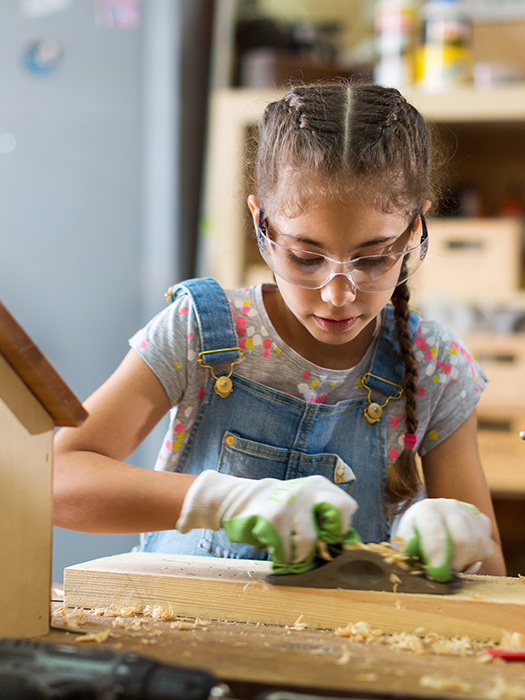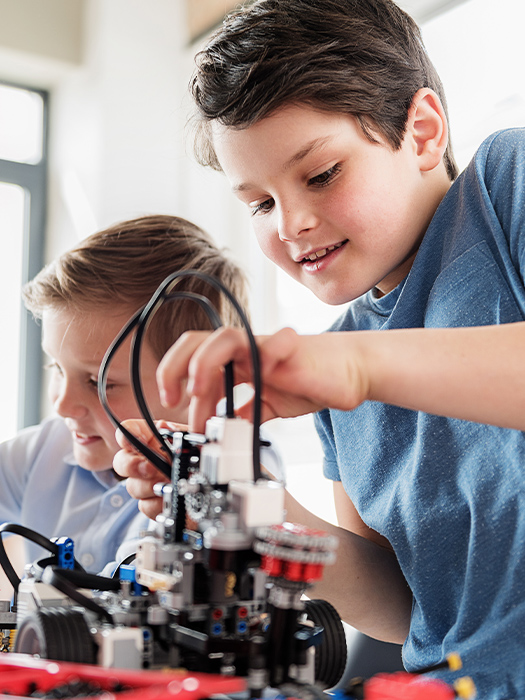Handcrafting a Culture of Thinking: Metacognition
What are your plans for your secular homeschool curriculum this coming school year? Language arts? Math? Science? History? What learning skills are you planning on having your children work on? Wouldn’t it be great to handcraft a culture of thinking in your home that is personally meaningful for your learners while providing support for a learner-centered education?
An important component of fostering this culture of thinking is to incorporate learning kills into your child’s education. If you were thinking these skills are something kids will just pick up, think about how many adults you know who have not mastered all the learning skills. By weaving these learning skills into your secular homeschool lesson plans alongside academic subjects, you can prepare your students to be lifelong learners while helping them excel in their coursework. Paired with a multimodal modal approach, this is an important part of a learner-centered education.

Metacognition Defined
Metacognition is the ability to use prior knowledge to plan a strategy for approaching a learning task, solving a problem, evaluating results, and modifying an approach. When we do purposeful thinking about our thinking, we engage in metacognition. It encompasses an important skill set that enhances learning and helps learners understand their own learning processes, and how their unique brain works.
6 Metacognitive Skills You Can Weave into the Coming School Year
Metacognitive Skill #1: Retaining, Retrieving, and Discussing/Using Knowledge
Metacognition is the ability to retain, retrieve, and discuss knowledge. These might sound like three different skills, however, they are partnered when scaffolding them and when learners demonstrate skill with them.
How to Work on this Skill
Multi-Step Instructions – Give students multi-step oral instructions. They cannot start until you have given all parts of the instructions. Start with one step, then progress to two step instructions, and so on.
Socratic Method – Asking genuine “I wonder” questions followed by “What do we already know?” is a great way to assess what has been retained. When your learner retrieves information showing they are learning, stop and engage them in a discussion, casually and intentionally pulling in more retained knowledge. Let your child know you’re proud of them for pulling that sort of information into the conversation.
Casual Conversation – A great way to measure if learning is being retained is to look for learners to retrieve information and discuss it outside of a school setting. Incorporate work on this skill into the fabric of daily life, and don’t just make this about your kids! Discuss what you’re learning, too. Model how you retrieve and discuss knowledge you have retained.

Metacognitive Skill #2: Directing their Own Learning
In terms of metacognition, self-directed learning incorporates:
1. Critical thinking
2. Locating resources that support the growth and development of ideas
3. Exploring those for validity and impact
4. A combination of these practices leads to the ability to connect learning to new experiences.
Working on these four steps requires oversight from a mentor and benefits from scaffolding.

How to Work on this Skill
Scaffold good entry points that meet a learner academically – When your learner is interested in a topic, it can be difficult for them to know where to start. Provide the needed scaffolding to get them started at a level that is challenging enough to be engaging. As they progress and their learning evolves, new questions emerge, and new resources are needed. Pay attention when that happens so you can provide those.
Teach students how to find adequate & accurate resources – The more students feel the pride of figuring it out on their own, the more they will feel empowered to keep learning, and they will repeat the pattern of discovery when applied to other interests and subjects. The problem is that there is a wealth of information at our fingertips, including a lot that is not credible. As students direct their learning, they need intentional teaching about how to select materials from good sources.
Promote Design Thinking – One way to foster self-directed learning is to use Design Thinking. You can scaffold this by asking, “How can you design something to solve a problem?” With design thinking, learners define a “problem,” something that needs attention, they brainstorm to come up with a possible solution, they build a prototype, and they test it. These last two steps can go on for a while in an iterative process. Scaffold this as needed and look for evidence of learners retrieving retained knowledge during the design process.
Metacognitive Skill #3: Using Subject Specific Vocabulary
The ability to think about your thinking in the context of learning new information requires a certain literacy with the words being used. For example, in a science course, if a student encounters unfamiliar words they will likely be unable to assess their knowledge. It may keep them from knowing what they know. If that happens, the learner will not recognize what information they have retained in order to retrieve it.
How to Work on this Skill
Learn Vocabulary with Learner – If you see issues with vocabulary, look at where students are using the vocabulary. If it is only in the context of coursework, that is the likely problem. The best way to learn subject specific vocabulary is to begin using it regularly in and outside of learning time. This can mean you have to learn the vocabulary too.
Words in Context – Retrieving the correct meaning of a word based on its context is a metacognitive skill. Understanding the specific definition for certain contexts is important. Think of the word “theory.” Is it used casually or in a science class? Knowing the context provides the information needed to understand ideas.
Latin Root Words or a book like Decoded – Studying Latin roots are a good way to work on this skill. A root has a specific historic meaning that relates, morphs, and evolves in modern day language. For older students, a book like Decoded (which has a lot of cursing and some drug use) where there is a collection of lyrics and their meanings in the context of rap music tells the story of a culture, an art form, a moment in history, and is also part memoir.

Metacognitive Skill #4: Making and Using Models
Speaking of words in context, here are some tips for two types of modeling — modeling metacognitive skills, and two- and three-dimensional models that are simplified, stripped down presentations to help focus in on specific concepts and thinking processes.

How to Work on this Skill
Demonstrate Metacognition – Model Metacognition for learners by interpreting information, data, and vocabulary, analyzing statements, and making conclusions about learning. In this way, you are explicitly articulating the underlying thinking process you use. Just make sure that when using modeling to scaffold, you meet students where they are.
Use two- and three-dimensional visual models: Visual models help learners think through what they are learning. They are great tools to draw out the information students have retained and help to scaffold them with retrieving their knowledge.
Metacognitive Skill #5: Perseverance and Stick-to-itiveness
The ability to purposefully work through the “steps” for better understanding is an important metacognitive skill. Think stick-to-itiveness as a demonstration of this skill. Does your learner bounce from activity to activity without finishing them, or do they work toward completion? Learners who generally see a project through to the end learn more. They have deeper, broader, and more nuanced understandings of knowledge and information. This skill is also important for making connections across disciplines. I have seen cases where people didn’t do this for learners. It creates situations where students know topics at a high level within a very narrow scope that is difficult to connect to other topics and information. It limits a student’s ability to do anything outside of a specific area.
How to Work on this Skill
Model this behavior – The best way to teach this behavior is to demonstrate it in action.
Discuss the importance of perseverance – Make perseverance a focused-skill that everyone takes seriously.
Incentives – Use incentives if you must but do what it takes to have students work on the habit of completing projects.

Metacognitive Skill #6: Evaluating their Own Work
Metacognition is the ability to think about your thinking. It is important that learners can evaluate what they know as they do that. Students who have an awareness of their own knowledge do a better job of recognizing when they are working on new skills and learning new things. This is where real learning occurs as students build on retained knowledge. This ability to evaluate your own work is an important metacognitive skill that will help build confidence. Too often learners doubt they are up for the task, even when it is obvious that they can do it. It can be frustrating, can’t it?!?

How to Work on this Skill
Knowing What You Know – A learner with strong metacognitive skills knows what they know. They have access to information they retain, then retrieve to use and build on. One of my favorite sayings of all time is John Wooden’s saying “It’s what you learn after you know it all that counts.” When you know which knowledge and tools in the learner’s toolbox to pull out to use on a job, you can engage in increasingly sophisticated and larger projects with a greater awareness of your learning. To help learners know what they know, use phrases like “you know that” and “you taught me something today,” to help your learner assess their knowledge and be more confident in their self-assessment.
Scaffold Skills #1-5 – There’s a reason this skill is number 6 on this list. It is through the scaffolding of the other metacognitive skills that learners can adequately and accurately evaluate their own work.
Growth Mindset for Evaluating Work – Use a growth mindset where evaluations are treated as an opportunity to grow. This is a learner focused approach where students know what they know and are encouraged to investigate new knowledge and skills.
A Final Thought
Metacognition is about creating a culture of thinking and learning that results in thoughtful and reflective learners who are motivated to engage in independent, lifelong learning. Strong metacognitive skills help learners connect to the unique way that their brain works. These are the skills of lifelong learners. This school year, in addition to planning for language arts, math, science, and history, make an effort to weave metacognitive skills into your lesson plans, too.
This is a part of The Learner’s Toolbox from Blair Lee. The Learner’s Toolbox is a multi-part series in the SEA Homeschoolers Magazine and SEA Homeschoolers Online Conference Series that focuses on learning skills that are essential for lifelong learners.
New to Homeschooling? Check out our How to Homeschool 101 Article.

